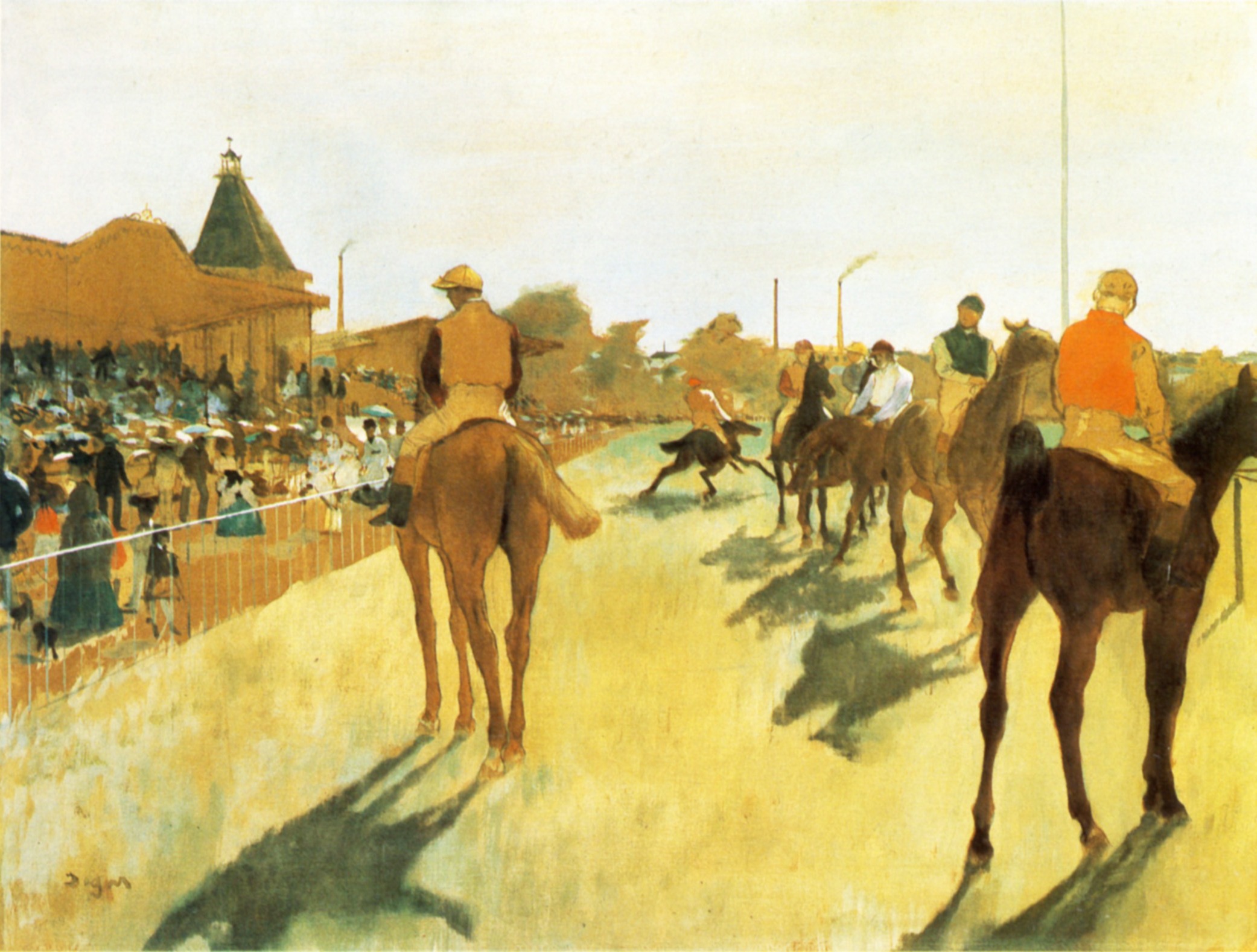art-Degas.com
Edgar Degas 1834-1917
Edgar Degas - Racehorses before the Stands 1872
 Racehorses before the Stands |
From Musée d'Orsay, Paris:
The theme of horse racing is recurrent in Degas's work, drawing its inspiration from the lifestyle of his contemporaries. This theme allowed him to tackle the traditional subject matter of the horse rider transposed into modernity. In the second half of the 19th century racecourses became very fashionable places for society where Paris bourgeois such as Degas shared their passion for this pursuit of aristocratic and British origin. Degas was also attracted by the theme for the opportunities it offered to study shapes and movement. He was also influenced by a variety of English artists specialised in horse race painting then highly successful, by equestrian representations by great masters such as Uccello, Gozzoli or Van Dyck, or by more contemporary artists like Vernet, Géricault or Meissonier.
Dated circa 1866-1868, The Parade, also entitled Race Horses in front of the Tribunes, is one of the first paintings by Degas on this theme. Degas renders the atmosphere of a racecourse where only the nervous movement of the last thoroughbred horse indicates the imminence of the start. By choosing this moment, banal in appearance, Degas manifested his will to reduce the role of the "subject matter" as such in his painting. He gave prevalence to light and lines: he was more interested in the silhouettes of riders and their mounts than in the start of the race. He deliberately neglected some of the elements that would allow identification of the place and of the owners of the horses, such as the colours of shirts. The diagonal motifs of the painting, the strong contrasts of light, in particular the shadows of the horses also reinforce the perspective down to the vanishing point located in the centre, emphasising the last jockey.